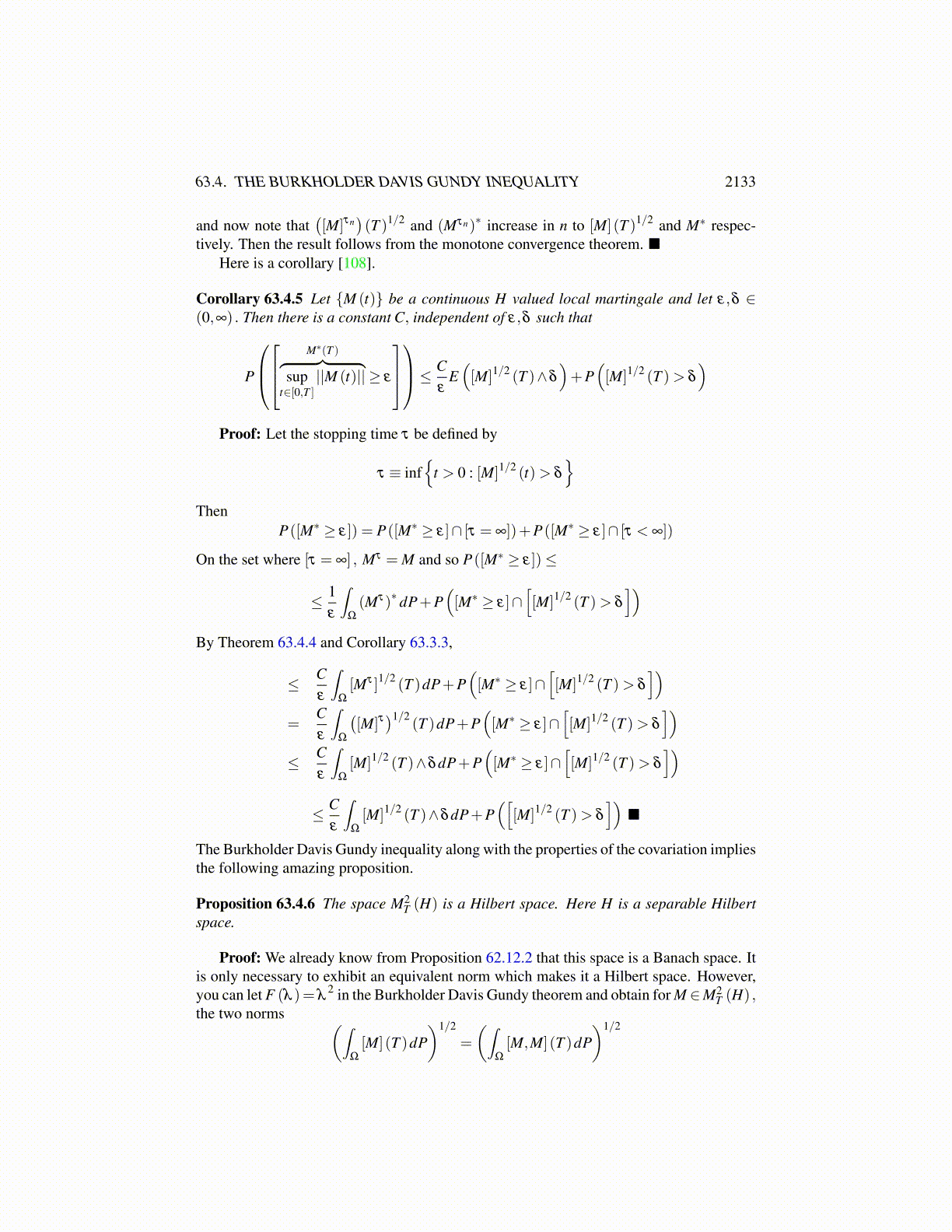
63.4. THE BURKHOLDER DAVIS GUNDY INEQUALITY 2133
ThusP([M∗ > βλ ]∩
[([M] (T ))1/2 ≤ rδλ
])≤ P([M∗ > λ ])δ
2
By the good lambda inequality,∫Ω
F (M∗)dP≤C∫
Ω
F(([M] (T ))1/2
)dP
which is one half the inequality.Now consider the other half. This time define the stopping time τ by
τ ≡ inf{
t ∈ [0,T ] : ([M] (t))1/2 > λ
}and let
Sr ≡[([M] (T ))1/2 > βλ
]∩ [2M∗ ≤ rδλ ] .
Then there exists t < T such that [M] (t)> β2λ
2. This time, let
N (t)≡ [M] (t)− [Mτ ] (t)−||M (t)−Mτ (t)||2
This is still a martingale since by Corollary 63.3.3
[M] (t)− [Mτ ] (t) = [M−Mτ ] (t)
Claim: N (t)(ω) hits λ2(
1−δ2)
for some t < T for ω ∈ Sr.
Proof of claim: Fix such a ω ∈ Sr. Let t < T be such that [M] (t)> β2λ
2. Then t > τ
and so for that ω,
N (t) > β2λ
2−λ2−||M (t)−M (τ)||2
≥ (β −1)2λ
2− (||M (t)||+ ||M (τ)||)2
≥ (β −1)2λ
2− r2δ
2λ
2 ≥ λ2−δ
2λ
2
By the intermediate value theorem, it hits λ2(
1−δ2). This proves the claim.
Claim: N (t)(ω) never hits −δ2λ
2 for ω ∈ Sr.Proof of claim: By Corollary 63.3.3, if it did at t, then t > τ because N (t) = 0 for
t ≤ τ, and so
0 ≤ [M] (t)− [Mτ ] (t) = ||M (t)−M (τ)||2−δ2λ
2
≤ (||M (t)||+ ||M (τ)||)2−δ2λ
2 ≤ r2δ
2λ
2−δ2λ
2 < 0,
a contradiction. This proves the claim.It follows that for each r ∈ (0,1) ,
P(Sr)≤ P(
N (t) hits λ2(
1−δ2)
before −δ2λ
2)